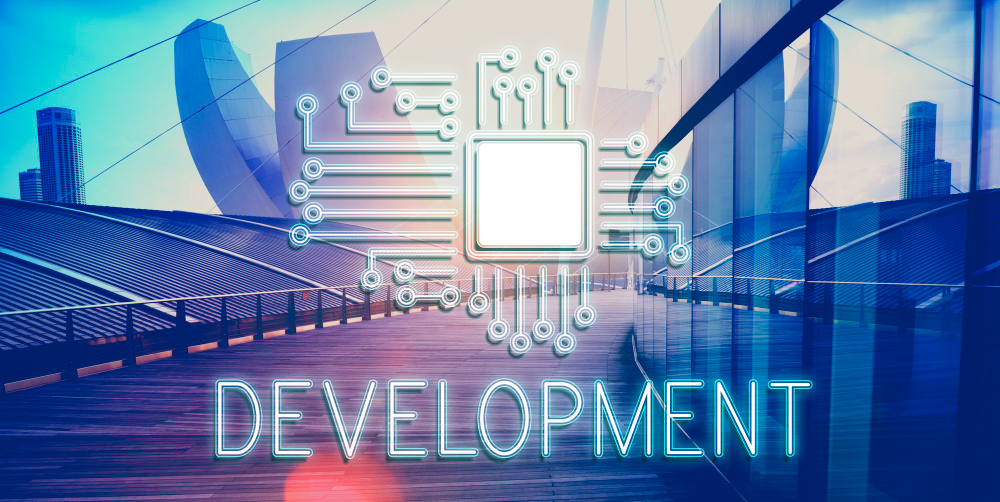Table of Contents
As we move into 2024, the world of web development continues to evolve rapidly. With new tools, frameworks, and methodologies emerging, developers and businesses must stay on top of the latest trends to remain competitive. This year promises significant innovations that will improve performance, user experience, and scalability, all while addressing growing demands for accessibility, security, and interactivity.
Let’s dive into some of the key web development trends and technologies set to dominate 2024.
1. AI and Machine Learning in Web Development
Artificial Intelligence (AI) and Machine Learning (ML) have been disrupting industries across the board, and web development is no exception. In 2024, these technologies will increasingly be used to create more personalized user experiences and automate various aspects of web development.
Key Applications:
- Personalization: AI-driven personalization engines will tailor content, design, and functionality based on user behavior and preferences.
- Chatbots & Virtual Assistants: Advanced AI chatbots will handle customer queries, resolve issues, and even assist with purchases. These bots can now offer more natural and accurate conversations due to advancements in Natural Language Processing (NLP).
- Code Automation: AI-powered tools like GitHub Copilot and Tabnine help developers by auto-completing code, suggesting best practices, and reducing development time.
Why it matters:
AI can significantly reduce the time it takes to develop complex, interactive websites while improving the end-user experience through tailored, dynamic content.
2. Progressive Web Apps (PWAs)
Progressive Web Apps (PWAs) are set to continue their rise in 2024, offering a seamless, app-like experience across both mobile and desktop devices. PWAs combine the best of web and mobile apps, providing users with fast loading times, offline access, and smooth performance.
Key Benefits:
- Offline Functionality: Service workers allow PWAs to function offline, ensuring users can access content without an internet connection.
- Native-like Experience: PWAs can be installed on users' devices, just like native apps, and accessed from the home screen without the need for app stores.
- Improved Performance: PWAs are faster than traditional websites, improving user retention and engagement.
Why it matters:
PWAs are cheaper and faster to develop compared to native apps and offer businesses a cost-effective way to reach a broader audience. This technology will continue to disrupt mobile app development.
3. Web3 and Blockchain Technology
Web3 and blockchain technology are set to revolutionize how we interact with the web, introducing decentralized applications (dApps) and secure, transparent data transactions. While still in its early stages, Web3 is expected to grow in 2024, particularly in the realms of finance, digital identity, and content ownership.
Key Innovations:
- Decentralized Applications (dApps): Unlike traditional apps, dApps run on blockchain networks, ensuring user data and app functionality are decentralized and secure.
- Smart Contracts: Smart contracts will enable automated, trustless transactions directly between users, reducing the need for intermediaries.
- NFTs and Digital Ownership: Web3 also enables the creation and trading of Non-Fungible Tokens (NFTs), providing new ways to represent digital ownership for everything from art to real estate.
Why it matters:
Blockchain technology adds an unprecedented level of security and transparency to web applications, particularly in industries like finance, healthcare, and real estate.
4. Headless CMS and the Rise of Decoupled Architectures
The rise of headless CMS platforms is reshaping how content is managed and delivered across various devices. Unlike traditional CMS systems, a headless CMS separates the front-end (presentation layer) from the back-end (content management). This decoupling allows for more flexibility, faster updates, and easier integration with multiple channels like mobile apps, wearables, and IoT devices.
Key Benefits:
- Flexibility: Developers can choose the best front-end technology without being tied to the CMS's front-end system.
- Scalability: Headless CMS platforms make it easier to scale across multiple channels while keeping content centralized.
- Omnichannel Delivery: Content can be pushed to websites, apps, and other platforms seamlessly from a single source.
Why it matters:
As users consume content across various devices, headless CMS solutions will enable businesses to provide consistent experiences while improving development efficiency.
5. Serverless Architecture
Serverless architecture is becoming a more prominent trend, particularly for companies looking to optimize resources and reduce operational costs. In a serverless environment, developers don't need to manage server infrastructure, as hosting and computing are handled by cloud providers like AWS Lambda, Microsoft Azure, and Google Cloud Functions.
Key Features:
- On-Demand Resources: Serverless platforms only run code when needed, making them highly cost-effective and scalable.
- Faster Time-to-Market: Developers can focus on writing code instead of worrying about server maintenance or scaling issues.
- Improved Security: Since the cloud provider handles infrastructure, server management, and security, businesses benefit from improved protection against cyber threats.
Why it matters:
Serverless architecture simplifies web development, reduces infrastructure costs, and ensures websites can handle traffic spikes with ease.
6. The Growth of Low-Code/No-Code Platforms
In 2024, low-code and no-code platforms will empower more non-developers to create and maintain websites and web applications. These platforms provide intuitive, drag-and-drop interfaces for building functional web solutions without writing extensive amounts of code.
Key Platforms:
- Webflow, Wix, and WordPress: Allow users to build fully customizable websites using visual interfaces.
- Bubble and OutSystems: Focus on app development without the need for manual coding, enabling faster deployment.
Why it matters:
Low-code/no-code platforms democratize web development, making it accessible to a wider audience. This trend will help small businesses, startups, and non-tech professionals quickly launch digital solutions without heavy reliance on developers.
7. Voice Search Optimization
As voice assistants like Google Assistant, Alexa, and Siri become more ubiquitous, optimizing websites for voice search will become crucial in 2024. Voice search optimization involves making content easily discoverable by search engines and ensuring that it responds well to natural language queries.
Key Aspects:
- Natural Language Processing (NLP): Websites need to optimize for conversational language and long-tail keywords that align with how users phrase voice queries.
- Featured Snippets: Optimizing content for featured snippets increases the likelihood of being the top result in voice search responses.
- Schema Markup: Implementing schema markup can improve how search engines understand and display information, making it more accessible to voice search platforms.
Why it matters:
With more users relying on voice search for quick queries, businesses that optimize for this technology will have a competitive edge in terms of discoverability.
8. Cybersecurity as a Top Priority
With rising cyber threats, cybersecurity in web development will be a dominant concern in 2024. Developers need to ensure that websites are secure from data breaches, hacking attempts, and other vulnerabilities.
Key Trends:
- Zero Trust Architecture: This approach assumes that every user, device, and application is untrusted by default and requires verification.
- Multi-Factor Authentication (MFA): MFA is becoming a standard security practice to prevent unauthorized access.
- Security Testing Automation: Tools that automate security testing will help detect vulnerabilities early in the development process.
Why it matters:
As cyber threats become more sophisticated, web developers must prioritize security to protect both their users and their business reputation.
9. WebAssembly (WASM) for High-Performance Web Applications
WebAssembly (WASM) is a binary instruction format that enables high-performance web applications to run in browsers. WASM allows developers to use languages like C, C++, and Rust to create web apps with near-native performance, making it ideal for games, simulations, and complex interactive tools.
Key Benefits:
- Improved Speed: WASM applications can run at near-native speeds, making them suitable for resource-intensive tasks.
- Cross-Browser Compatibility: WASM works across all major browsers, making it a versatile tool for web development.
Why it matters:
With the rise of interactive web applications and gaming, WASM will enable developers to deliver powerful web experiences that were previously only possible with native apps.
Conclusion
2024 is set to be an exciting year for web development, with emerging technologies and trends shaping the future of how we interact with the web. Whether it's through the growing impact of AI, the adoption of serverless architectures, or the rise of Web3, developers must remain agile and adaptive. Keeping up with these trends will be essential for creating efficient, secure, and engaging web experiences that meet modern users' demands.
Staying ahead of these changes will not only help developers create cutting-edge websites but also empower businesses to offer better user experiences, ultimately driving success in the digital landscape.
No Comments Yet
Be the first to share your thoughts about this post!







Comments (0)